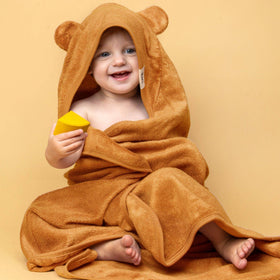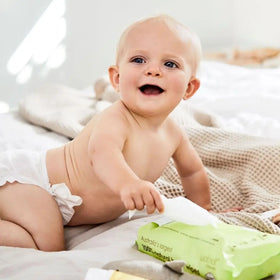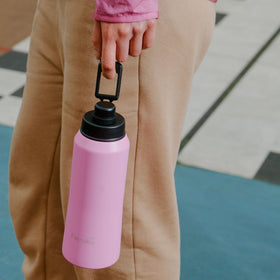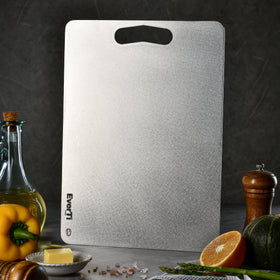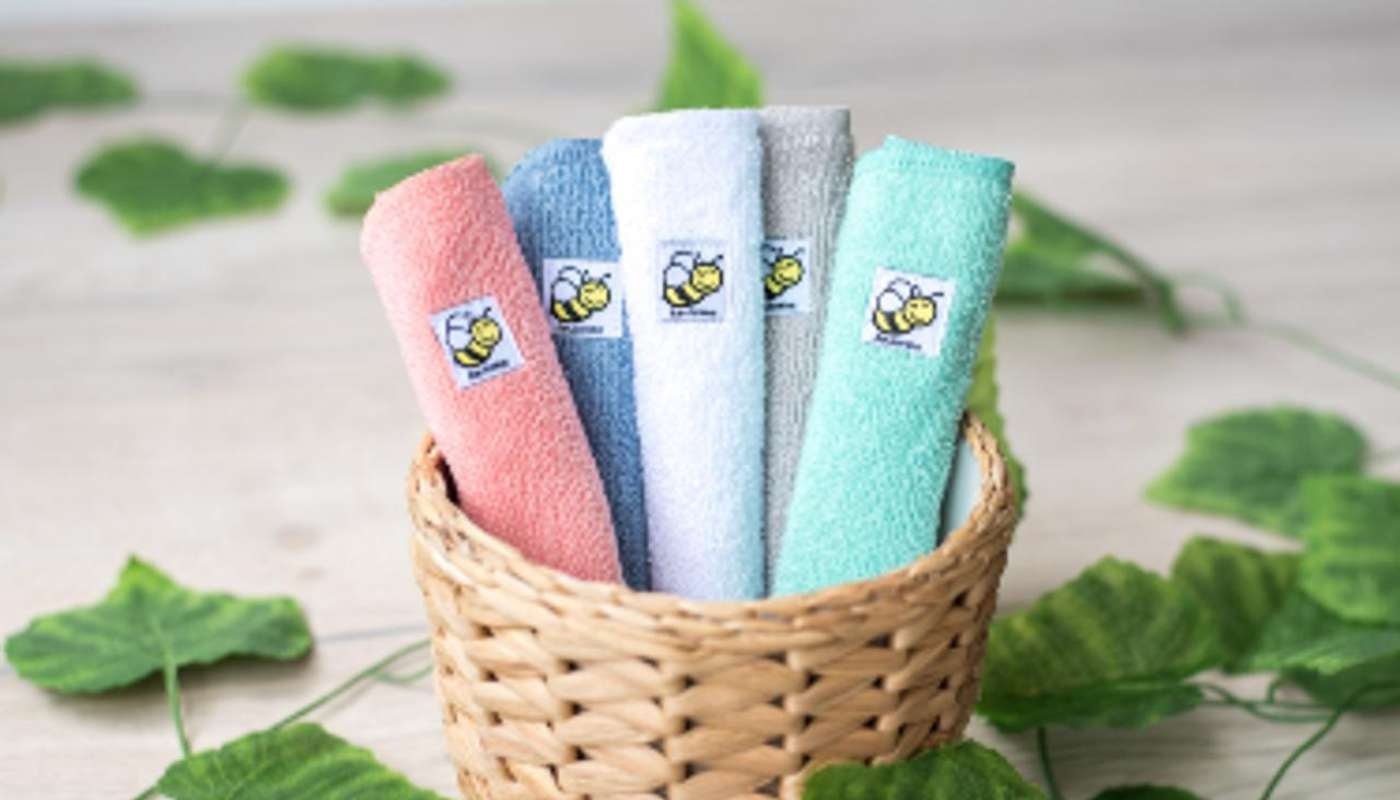
The Ultimate Guide to Reusable Baby Wipes
Plenty of people talk about cloth nappies and how ditching the disposables is better for the environment and the pocket. What you might not hear talked about as much though, is baby wipes!
Just like disposable nappies, single use baby wipes are commonly found in many homes with young kids. And, just like nappies, disposable wet wipes can be a big drain on your bank balance as well as the environment.
If you’ve never considered using reusable baby wipes before or maybe found the thought of them a little daunting, we’re here to help. We’re going to show you why we think cloth baby wipes are so awesome!
Why Should You Use Reusable Nappy Wipes?
Maybe you just stumbled across this article and you’re not even sure why reusable wipes are a good idea. Well, let’s take a look at the main reasons we think they’re better than disposable wipes.
They do a Better Job
The biggest reason we love cloth wipes? We honestly think they just do a much better job!
Disposable wipes are usually thin and you seem to be forever wrestling more and more out of the packet. On the other hand, reusable wipes are generally made from thicker fabric and seem to do a better job with fewer wipes.
I usually found I’d use three or four disposable wipes for a single poop, depending on the brand. With washable wipes, I very rarely needed more than one (giant poo explosions excluded!).

Cost Savings
The cost of baby wipes varies but even cheap baby wipes can add up to a huge sum over your little one’s lifetime.
Reusable wipes can be used and then washed time and time again and even reused for a second child if they’re looked after well. You do have to factor in extra washing costs but, once any poo is soaked off, they’re small enough that they can be thrown in with your regular load.
No Nasty Chemicals
Many of the big brand disposable wipes are full of chemicals and toxins that you probably don’t want touching your baby’s sensitive skin.
There are some great eco baby wipes and non toxic options but they’re usually a little more expensive. It can be handy to have a pack of these around for emergencies but the best brands contain little more than water and natural scents or oils. In which case, why not just make your own and save the money altogether?
Environmental Concerns
If you want to lead a more sustainable lifestyle with your baby, ditching the disposable baby wipes is a great way to help the planet in more ways than one.
Firstly, flushable wipes? They’re not actually flushable at all! If you’ve been flushing baby wipes down the toilet, the best thing you can do is to stop straight away. Not only do baby wipes not break down like toilet paper (yes even when labelled as “flushable”) but they are thought to contribute to about 75% of sewer blockages. These blockages increase the risk of overflows to local creeks and rivers as well as costing the economy serious money. Wipes that don’t cause blockages could make there way into our oceans, wreaking havoc with marine life.
Typically, wet wipes contain plastics which is why they take so long to break down. Even if you don’t flush them, they’ll probably end up in landfill. Biodegradeable wipes are available but these typically end up in landfill too, where conditions aren’t ideal for them to break down and it can take years.
What are Cloth Baby Wipes Made of?
You’ve probably heard us talk about the “cradle to grave” impact of products in the past and it’s how we like to rate products in terms of their environmental impact. Many fabrics can be marketed as organic, natural, or eco friendly but still undergo manufacturing processes and transportation that doesn’t make them as friendly as they first appear.
There are heaps of different fabric options when it comes to reusable wet wipes. Every fabric has its own pros and cons and a different cradle to grave impact, so it’s worth checking before you buy.
- Bamboo Baby Wipes (rayon): Bamboo is highly absorbent, soft, breathable, and hypoallergenic. When bamboo is refined into a rayon fibre though, it usually undergoes a process involving bleaching agents and environmentally hazardous chemical.
- Bamboo (Lyocell): All the same great features and benefits as bamboo rayon but this fabric is made in a “closed loop system”. This process recaptures over 99% of chemicals used and therefore has a much lower environmental impact. This is the best option if you want reusable bamboo wipes.
- Cotton Baby Wipes: It’s natural, non-allergenic, and highly absorbent. For the very best option, look for Oeko-Tex certified organic cotton which ensures there are no harmful chemicals used in the growing, processing or dying. These organic baby wipes are perfect for sensitive baby skin.
- Flannel: A densely brushed material made from woven cotton. It tends not to be very absorbent, but it's lovely and soft.
- Jersey: A quick to absorb fabric that’s usually made from wool, cotton and synthetic fibres.
- Terry: Most terry fabrics are made from cotton (and in some cases, bamboo, linen, silk, and even synthetic fibres) and have good absorbency.
- Velour: A super absorbent semi synthetic material made from cotton or bamboo combined with polyester.
How to Use Reusable Baby Wipes
You basically use reusable wipes just like you would disposable ones. Make sure to have them handy anywhere you might need to do an emergency nappy change. I used to keep a small container with some in every room, just in case.
Here are some quick tips to keep in mind:
- For urine, dry baby wipes work just fine. No need to add anything extra to the cloth.
- For poop, use the nappy to wipe off as much poo as possible first. Then, use one or two damp cloths to clean their bottom.
- When you’re out and about, you can pre-moisten your wipes at home and pop them in a clean wet bag or container so they stay damp.
- Forgot to pre-moisten? No problem, a bottle of water works just fine too.
- Remember to take a spare wet bag for soiled wipes.
How Many Reusable Baby Wipes Do I Need?
How many cloth wipes you’ll need is different for everyone and really depends on two main factors.
- How many nappy changes you do in a day
- How often you do a load of washing
Newborn babies need a lot more nappy changes than an older baby so if you are starting from birth, expect to need a larger stash.
If you’re using cloth nappies as well, chances are you’ll do a wash every other day but if you’re using disposable nappies you may not do a load of washing as frequently.
Personally, I started with cloth wipes from birth, usually washed every other day, and had about 35 wipes. This was more than enough for me, even during the newborn stage. As my baby got older I didn’t need as many for nappy changes but still used the wipes to clean sticky hands and wipe up spills.

How to Wash Reusable Baby Wipes
Washable wipes aren’t too much of an extra hassle at all. You’d normally throw dirty laundry in the hamper until you’re ready to wash. The only difference with cloth wipes is they get thrown in a tub of water until it’s time to wash.
Here’s a quick rundown on the best way to wash reusable wipes.
- Soak your wipes in cold water - This is especially important for pooey wipes. Soaking them will stop the poo from sticking and staining and make sure they wash well. It also means you don’t have to worry about poo fragments getting in your washing machine.
- Wash in the machine - Throw the wipes in with your regular load. If you use cloth nappies you might like to wash them together although it really doesn’t matter.
- Dry - You can dry cloth wipes however you normally dry clothes but line drying them in full sun is a great way to naturally bleach out stains.
Be sure to check your specific brands washing instructions for more detailed recommendations.
Washing Tips
We try to be as environmentally friendly as possible and use natural and low tox products wherever possible. Doing the laundry is no different and keeping these tips in mind can help you be more low tox, eco friendly, and possibly even save money.
- Detergent - Choosing an eco friendly detergent can help to stop hazardous chemicals entering our waterways. Even more importantly, it limits the number of chemicals and toxins that come into contact with your baby’s sensitive skin.
- Water Temperature - If you’ve soaked your wipes, they’re usually easily washed on a cold setting which will reduce your power bill as well as being more eco friendly.
- Drying Method - Line drying outside or inside on a clothes horse is heaps more energy efficient than using a tumble dryer.
Recipes - Homemade Baby Wipes Solution
Homemade reusable baby wipes are a great way to know exactly what you’re using to clean your baby’s sensitive skin. DIY baby wipes are super easy and you can probably make your own baby wipes solution with things you already have at home.
In fact, there’s nothing wrong with using plain water to clean your baby’s bottom. In fact, it’s the best option for newborns as their skin is particularly sensitive and prone to absorbing whatever is put on it. Even “baby safe” essential oils shouldn’t be used before 3 months.
If your baby is a little older, try making some DIY natural baby wipes solution. Whether want antibacterial baby wipes, Castille soap baby wipes, aloe baby wipes, or coconut oil baby wipes, there’s sure to be a reusable baby wipes recipe for you.
Here are some great recipes that we love.
1. Here's a simple essential oil baby wipes soak solution
Ingredients:
- 15-20 reusable baby wipes (dry)
- Water
- Tea tree essential oil
- Lavender essential oil
Instructions:
- place baby wipes in a bowl/container (I had a big glass bowl I used)
- pour a kettle of boiling water over the top
- add a couple of drops of tea tree essential oil and a couple of drops of lavender essential oil. Mix it around a bit
- allow the wipes to cool
2. Our Spray solution
Ingredients:
- 1 tablespoon of Dr Bronner’s pure castile soap
- Couple of drops of essential oil (you can choose whatever you like for antibacterial purpose or aromatherapy)
- 3 cups water (alternatively, you can replace this with 3 cups of chamomile tea)
Instructions:
- combine ingredients and pop it into a spray bottle.
- you’ll need to make the solution every week to make sure that the spray doesn’t go off.
3. Coconut oil DIY baby wipes:
Ingredients:
- 3 cups distilled water or boiled tap water
- 3-4 tablespoons organic coconut oil
- 1 teaspoon baby wash (liquid castile soap is ideal)
- 3 drops lavender essential oil
- 2 drops melaleuca (tea tree) essential oil
Instructions:
- boil water
- combine with coconut oil until oil is all melted
- add the rest of the ingredients and mix
- pour water over wipes
- allow wipes to cool before using
Ingredients:
- 3 teaspoons pure liquid aloe vera
- 3 tablespoons organic olive oil or almond oil
- 2 tablespoons unscented castile soap
- 4 cups water, boiled and cooled
Instructions:
- combine all ingredients
- add them into a spray bottle
- shake before using and spray onto wipes
Note that olive oil will rise to the top of the bottle between uses; this is normal, so just shake the bottle with the solution before using.
Ingredients:
- 20 ml witch hazel extract
- 80 ml filtered water
- a few drops of calendula or chamomile essential oil (optional)
Instructions:
- place all ingredients in a glass container and shake gently to combine
- soak reusable baby wipes in the solution and use as needed
- you can also pop the solution into a spray bottle
Where to Buy Reusable Baby Wipes in Australia
Plenty of stores and brands are starting to realise how much better cloth wipes are than disposables. If you’re wondering where to buy reusable baby wipes in Australia, check out some of the best baby wipes at Hello Charlie.
Pea Pods Bamboo Reusable Wipes
94% bamboo and 6% polyester, these are a super soft 20cm square.
I used these, and just washed them in with my normal laundry load or cloth nappies and they kept their softness and absorbency perfectly.
Baby Beehinds Organic Cotton Cloth Wipes
Soft organic cotton with a grippy terry side, and a smooth velour side. In a range of colours which can be handy to help separate face and hand wipes from bottom wipes.
Nature's Child Organic Cotton Baby Wipes
Light, soft organic cotton with a grippy terry side.

